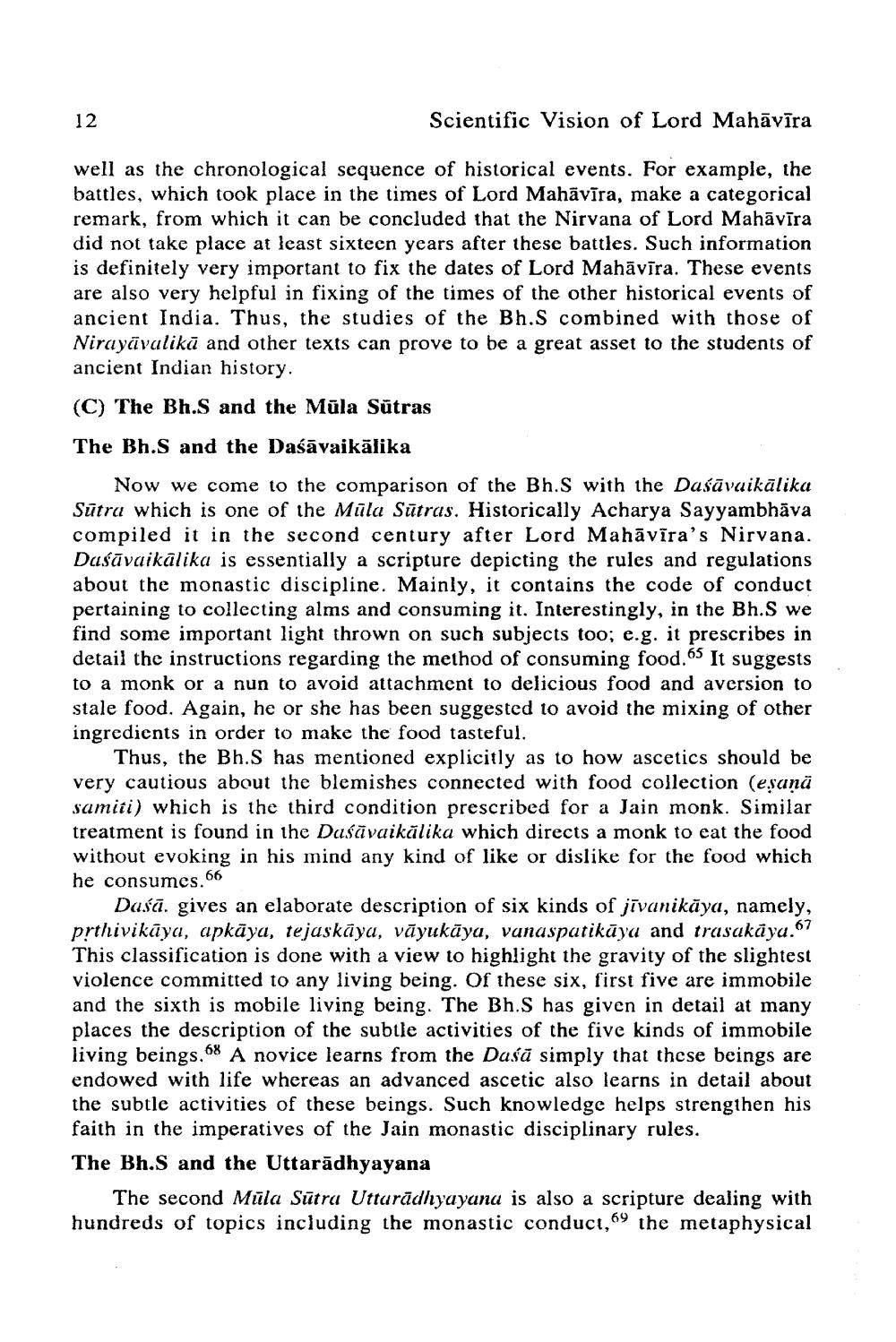________________
12
Scientific Vision of Lord Mahāvīra
well as the chronological sequence of historical events. For example, the battles, which took place in the times of Lord Mahāvīra, make a categorical remark, from which it can be concluded that the Nirvana of Lord Mahāvīra did not take place at least sixteen years after these battles. Such information is definitely very important to fix the dates of Lord Mahāvīra. These events are also very helpful in fixing of the times of the other historical events of ancient India. Thus, the studies of the Bh.S combined with those of Nirayāvalikā and other texts can prove to be a great asset to the students of ancient Indian history.
(C) The Bh.S and the Müla Sütras
The Bh.S and the Daśāvaikälika
Now we come to the comparison of the Bh.S with the Daśāvaikālika Sūtra which is one of the Müla Sūtras. Historically Acharya Sayyambhāva compiled it in the second century after Lord Mahāvīra's Nirvana. Daśāvaikālika is essentially a scripture depicting the rules and regulations about the monastic discipline. Mainly, it contains the code of conduct pertaining to collecting alms and consuming it. Interestingly, in the Bh.S we find some important light thrown on such subjects too; e.g. it prescribes in detail the instructions regarding the method of consuming food.65 It suggests to a monk or a nun to avoid attachment to delicious food and aversion to stale food. Again, he or she has been suggested to avoid the mixing of other ingredients in order to make the food tasteful.
Thus, the Bh.S has mentioned explicitly as to how ascetics should be very cautious about the blemishes connected with food collection (esanā samiti) which is the third condition prescribed for a Jain monk. Similar treatment is found in the Daśāvaikälika which directs a monk to eat the food without evoking in his mind any kind of like or dislike for the food which he consumes. 66
Daśā. gives an elaborate description of six kinds of jīvanikāya, namely, prthivikāya, apkāya, tejaskāya, vāyukāya, vanaspatikāya and trasakāya.67 This classification is done with a view to highlight the gravity of the slightest violence committed to any living being. Of these six, first five are immobile and the sixth is mobile living being. The Bh.S has given in detail at many places the description of the subtle activities of the five kinds of immobile living beings. 68 A novice learns from the Daśā simply that these beings are endowed with life whereas an advanced ascetic also learns in detail about the subtle activities of these beings. Such knowledge helps strengthen his faith in the imperatives of the Jain monastic disciplinary rules. The Bh.S and the Uttarādhyayana
The second Müla Sūtra Uttarādhyayana is also a scripture dealing with hundreds of topics including the monastic conduct, 69 the metaphysical




